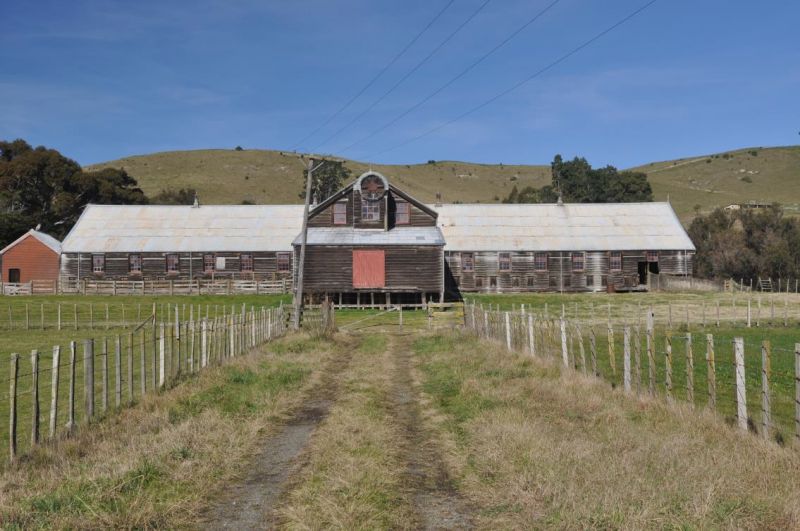INTRODUCTION
Maraekakaho Station is located about 20 kilometres west of Hastings. From 1857 Donald McLean leased and bought land from the Maori owners. Donald McLean encouraged other members of his family to come to New Zealand from the Scottish Island of Tiree, and Maraekakaho Station was managed and staffed by his relatives and other family connections while Donald McLean himself was engaged in the process of land purchase for the Crown, ultimately holding the position of Chief Land Purchase Commissioner for the colonial government from 1853. Later, he pursued a political career, being elected to the position of Superintendent of the Hawke’s Bay Province in 1863 and, in 1866, winning the Hawke’s Bay seat in Parliament. He was knighted for his services in 1874.
After Sir Donald McLean’s death on 5 January 1877, Maraekakaho Station was inherited by his son, R D Douglas McLean (later spelt as Maclean). Although Douglas served one term as Member of Parliament for Hawke’s Bay (1896-1899), and served on a number of community bodies in Hawke’s Bay, his real interest was the work of farming. Under his management Maraekakaho became one of New Zealand’s premier stations, renowned for its pure-breed Merino, Lincoln and Leicester sheep, shorthorn cattle, and horses - both draught horses and Welsh ponies and the area increased to some 58,093 acres of freehold and leasehold land.
There was an extensive range of buildings constructed on the station, many of which are still standing and in good condition today. Houses and cottages accommodated the 80 married couples and single men who were employees – and some of these dwellings remain. The stables and coach-house, and the slaughterhouse have also stood the test of time, along with a concrete-walled dairy with water-cooled concrete storage shelves,
In 1883 Douglas Maclean had a 28-stand woolshed with a large storage loft constructed at Maraekakaho. Initially the shearing was done with hand shears, but in 1891 a Wolseley shearing machine was installed with the overhead gear being powered by an 8hp Hornsby engine. In November that year the Hawke’s Bay Herald reported the manager as stating that 54,000 sheep would be shorn that year.
Later a power plant was installed, on the station, described in a 1910 article in the Dominion newspaper as having a 44hp gas engine, a direct coupled 15kw dynamo, a 20hp stand-by petrol engine, and a storage battery of 130 cells. This plant supplied power for working wood saws, shearing machines, wool presses, and the horse clipping machinery as well as lighting buildings.
From the 1890s, as a result of the Seddon Ministry’s policy, there was pressure to break up large estates in New Zealand and significant blocks were sold off from the Maraekakaho Station.
R D Douglas Maclean was knighted for his services to the Dominion of New Zealand in 1927. Sir Douglas Maclean died on 7 February 1929 and the remaining 12,000 acres of Maraekakaho Station was subdivided and sold by auction in 1930.
The Maraekakaho woolshed is still a prominent landmark on State Highway 50 in Hawke's Bay. On the front of the building facing the road there is a large and distinctive wheel at the top of the gable. This operates a lifting tower inside the woolshed.
In the following article, the operation of the lifting tower is described by Michael Wenley, a trustee of the property, Michael, is a grandson of James Adam Seton Wenley, who bought 1,100 acres of Maraekakaho Station land at the 1930 auction - an area that included the woolshed and stables.
MARAEKAKHO WOOLSHED LIFTING TOWER : Article By M J Wenley












Comments are closed.